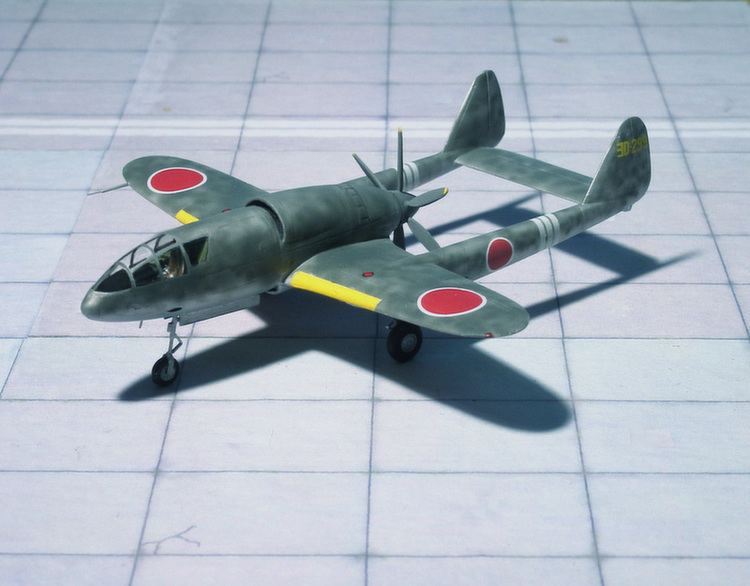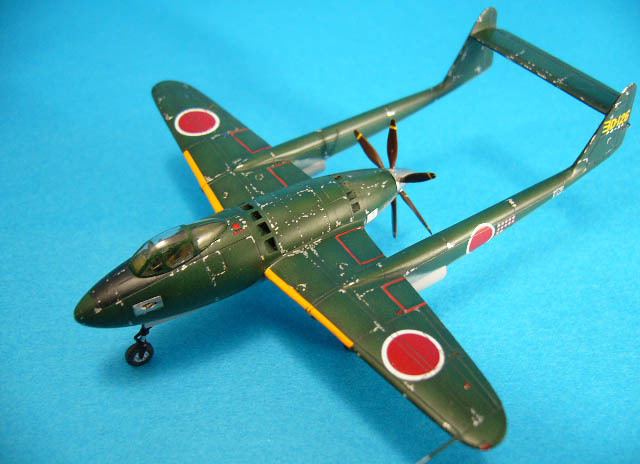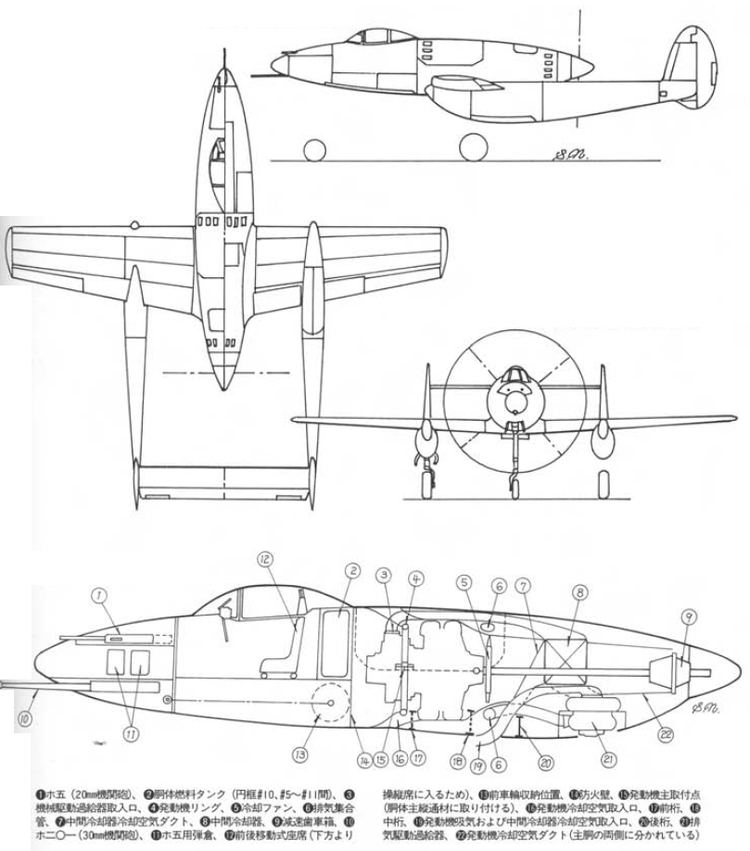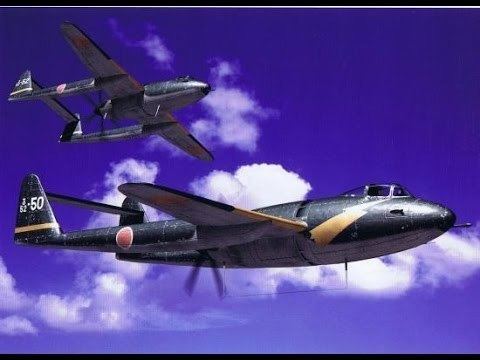Top speed 756 km/h Length 13 m | Wingspan 12 m Start date 1944 | |
 | ||
Mitsubishi j4m senden flashing lightning
The Mitsubishi J4M Senden (閃電"Flashing Lighting") or Navy Experimental 17-Shi Otsu B Type Interceptor Fighter Senden, Allied reporting name Luke, was a Japanese World War II fighter aircraft proposed by Mitsubishi for use by the Imperial Japanese Navy. The J4M project did not proceed beyond the design stage.
Contents
- Mitsubishi j4m senden flashing lightning
- World of warplanes mitsubishi j4m senden ace
- Design and development
- Specifications J4M estimated
- References

World of warplanes mitsubishi j4m senden ace
Design and development

To provide the Imperial Japanese Navy with a land-based high-performance interceptor aircraft, Mitsubishi designed the J4M. It was to have been a single-seat, twin-boom, low-wing monoplane with a central nacelle housing an unstepped cockpit and a 1,590-kilowatt (2,130-hp) Mitsubishi Ha-43 radial engine behind the pilot driving a four-bladed pusher propeller rotating between the booms. The booms were to extend aft from the leading edge of the wing and were mounted below the central nacelle. The aircraft was to have had tricycle landing gear and an armament of one 30-mm and two 20-mm cannon.

Design of the initial J4M1 version ended when the Navy put its support behind the competing Kyūshū J7W fighter, and Mitsubishi did not build a prototype. The Allies nonetheless assigned the J4M the reporting name "Luke" during World War II.
Specifications (J4M estimated)
Data from Japanese Secret Projects:Experimental aircraft of the IJA and IJN 1939-1945
General characteristics
Performance
Armament
